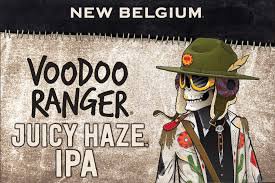- Joined
- Dec 16, 2015
- Messages
- 935
- Reaction score
- 355
Couchsending, I'm with you on where the haze comes from. I was just under the impression that the pros were using whirlpool hops significantly. Thats why I asked for sources because it's interesting to learn more.
Kinda but not really? Everyone jumping on the bandwagon missed the point of them and assumed that the goal was haze, so they focused on that. But the goal is really a specific beer that is smooth, pleasant, not bitter, and hugely flavorful and aromatic. Those that are focusing on the haze aspect are missing the point and perpetuating bad examples of the style. Those that get it understand that haze is a side affect, not a goal.
It should never be from yeast (I've made crysltal clear beers with conan, and i've made beers with conan that are hazy 6 months on). It should not be from adjuncts. No one uses flour. I was always under the impression that home brewers were using flaked adjuncts for body more than anything.
The Hazy IPA and NEIPA are not the same beer from what I understand, but that some feel they crossover.
Kinda but not really? Everyone jumping on the bandwagon missed the point of them and assumed that the goal was haze, so they focused on that. But the goal is really a specific beer that is smooth, pleasant, not bitter, and hugely flavorful and aromatic. Those that are focusing on the haze aspect are missing the point and perpetuating bad examples of the style. Those that get it understand that haze is a side affect, not a goal.
It should never be from yeast (I've made crysltal clear beers with conan, and i've made beers with conan that are hazy 6 months on). It should not be from adjuncts. No one uses flour. I was always under the impression that home brewers were using flaked adjuncts for body more than anything.

















































![Craft A Brew - Safale BE-256 Yeast - Fermentis - Belgian Ale Dry Yeast - For Belgian & Strong Ales - Ingredients for Home Brewing - Beer Making Supplies - [3 Pack]](https://m.media-amazon.com/images/I/51bcKEwQmWL._SL500_.jpg)











